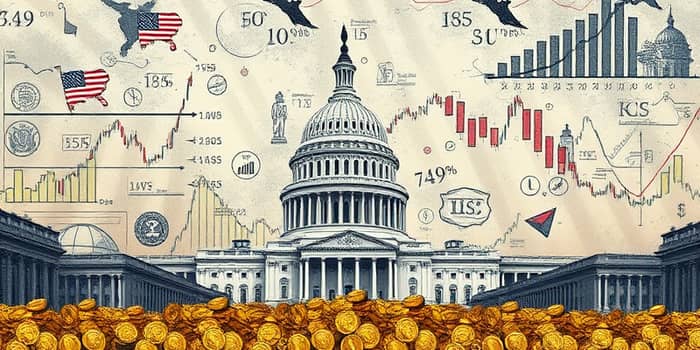
The reinstatement of the U.S. debt ceiling at $36.1 trillion on January 2, 2025, has reignited a heated debate among lawmakers, investors, and economists. This renewed focus on the borrowing cap underscores the intersection of governance and economic stability, reminding the nation of the high stakes involved when fiscal and political interests collide.
The U.S. debt ceiling represents the statutory limit on federal debt that the U.S. Treasury can issue. Uniquely shared only with Denmark, this cap differs from the more common international practice of tying limits to a percentage of GDP, thereby avoiding hard deadlines.
Since its inception, the debt limit has been modified 122 times, reflecting the evolving fiscal needs of the nation. While Denmark’s cap operates largely as a formality, in the U.S. it has become a potent tool in political negotiations, often leading to brinkmanship that can unsettle global markets.
The Fiscal Responsibility Act of 2023 suspended the debt limit until January 1, 2025, allowing borrowing to continue uninterrupted. Upon reinstatement at roughly $36.1 trillion, the Treasury resumed borrowing under the new ceiling, marking a $4.7 trillion increase from the $31.4 trillion limit in mid-2023.
Key figures and milestones:
According to the Federal Reserve of Chicago, the market-implied default risk remains historically low at approximately 1.1%, a stark contrast to spikes above 20% during the 2011 and 2013 standoffs.
Thus far, markets have behaved with relative calm, though trading in U.S. sovereign credit default swaps has ticked upward. Distortions in Treasury bill markets remain minimal, a testament to investor confidence in U.S. creditworthiness despite political noise.
Nevertheless, volatility could surge if negotiations drag on. Financial institutions carefully monitor Treasury auction results, yield curve shifts, and liquidity in short-term funding markets as barometers of stress. Any sign of escalation could trigger rapid repositioning and wider credit spreads.
The partisan divide in Congress sets the stage for intense debate. While both major parties agree that a default is unacceptable, their approaches to spending cuts, taxation, and long-term fiscal policy differ sharply.
The proposed One Big Beautiful Bill Act proposal would increase the limit by $4 trillion, effectively postponing the next showdown until 2027. However, securing swift Senate approval and the president’s signature remains a formidable challenge given intra-party tensions.
The Congressional Budget Office warns that extraordinary measures to avert default may be exhausted by August 2025. Failing to raise the ceiling by then could trigger the first-ever U.S. sovereign default, with catastrophic economic repercussions.
Beyond the immediate crisis, the nation must confront rising deficits and debt levels projected to reach 156% of GDP by 2055. Without a credible plan to rein in long-term obligations, the U.S. risks higher interest rates, reduced policy flexibility, and potential downgrades by credit rating agencies.
Most advanced economies avoid hard statutory limits, opting instead for debt-to-GDP targets enforced by fiscal councils or balanced budget rules. This approach smooths borrowing requirements over time and reduces the risk of sudden political impasses.
For instance:
Adapting these models could help the U.S. transition towards a more predictable fiscal framework that separates debt management from short-term political battles.
Investors, business leaders, and citizens alike can take proactive steps to navigate this uncertainty:
By adopting a multi-stakeholder approach to fiscal stability, individuals and institutions can help foster a more resilient economic environment.
The 2025 debt ceiling debate encapsulates the delicate balance between democratic governance and economic stewardship. As Congress grapples with thresholds and trade-offs, the broader public keenly watches the outcome, aware that the consequences extend far beyond Washington’s corridors.
Ultimately, transitioning from crisis-driven negotiations to a stable, predictable fiscal rulebook will require bold leadership and collaborative solutions. Only then can the United States safeguard its credit standing and ensure long-term prosperity for future generations.
References













